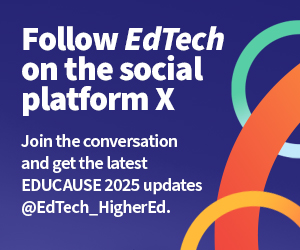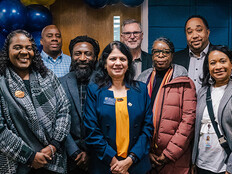Collective Will Establishes Institutionwide Values
According to EDUCAUSE, IT leaders in the coming year will have to focus on establishing shared values and standards that will help their institutions break down silos to work together to achieve their common goals.
The IT issues that align with collective will are:
- Data analytics for operational and financial insights. Institutions are leveraging data analytics to provide insights into trends and areas for cost and operational optimization.
- Building a data-centric culture across the institution. By expanding and improving data access across campus, institutions can use data as a strategic asset.
- Knowledge management for safer AI. Integrating knowledge management into data governance, privacy and ethics programs can mitigate the risks of AI.
- Measured approaches to new technologies. By assessing current systems and investments, institutions can make better financial decisions.
- From reactive to proactive. Predictive data analytics can help institutions strengthen agility and planning.
Data governance is woven throughout the report, which is part of this collective will, McCormack said.
“All these AI and data capabilities that we're excited about and starting to use have to be built on a solid foundation of shared values, shared standards and shared ethics around how we're going to use our data,” he said.
LEARN MORE: Modern learning environments support student success.
This also means establishing common definitions to ensure the data institutions are using is the best it can be.
“While the AI is getting faster and we have more access to it, the data that's feeding it is not necessarily reliable,” Copp said. “Our institutions have to grapple with not only the technology and reliability but also the processes by which those things are happening. Do they have a shared language? One term could mean 20 different things to 20 different people.”
Harnessing Individual Capabilities Benefits the Institution
On the flip side, fostering individual skills and contributions are key to contributing to the shared institutional goals.
The IT issues that align with individual capabilities are:
- Collaborative cybersecurity. Security is a shared responsibility, and creating that culture across the institution can be achieved via end-user training and access to security services.
- The human edge of AI. End users should feel empowered to creatively engage with AI tools in a safe environment.
- Technology literacy for the future workforce. Equipping students with in-demand technology skills requires discipline-specific technology training.
- AI-enabled efficiencies and growth. Automation and AI can reduce costs, increase efficiency and improve decision-making.
- Decision-maker data skills and literacy. Decision-makers should understand how to use and interpret institutional data.
While data is also seen as an opportunity for collaboration, McCormack said it’s at its most useful when individual contributors have the right skills.
DISCOVER: Higher education institutions are using AI for teaching, learning and operations.
“We can have the cleanest, most mature data capabilities at the institution imaginable,” he said. “But if that person who's at that decision point for the institution doesn't understand how to interpret, how to act on the data they have, then that significantly diminishes the success and the impact that data can have for institutions.”
Collaborative cybersecurity sits at the top spot on the list this year. McCormack said cybersecurity is a shared responsibility across institutions, which should instill a sense of awareness in individuals so they understand why cybersecurity is important.
“Security in general can't be viewed as a barrier to our work,” he said. “It's important for everyone, and everyone has to be a partner in building and supporting those capabilities for the institution.”
McCormack said this issue of security is woven throughout many of the other issues on the list as well.
“Anytime we start talking about AI or some of our new, more sophisticated data and analytics capabilities, security and privacy is always right there as a top-of-mind consideration,” he said. “We’re all excited about AI and new data capabilities, but I think we're also all very realistic about some of the risks and the things that we should be concerned about.”
READ MORE: Universities are increasingly adopting zero trust strategies.
Internal and External Connections Are Key to Higher Ed’s Resilience
This is a difficult time for higher education, McCormack said in his EDUCAUSE presentation, so the need for connection is more important than ever. While the Top 10 report focuses on connections at an institutional level, McCormack said that connection should extend to external collaborators as well.
“There are the connections out to the institution's local community as a way to find relevance in its mission and connect students to work and learning opportunities,” he said. “There are connections out to our industry partners to support the technologies and capabilities we're talking about. And then there are the connections to our peer institutions and technology leaders and being intentional about peer-based sharing and learning.”
This connection helps build higher education’s resilience, Copp said.
“While higher education institutions don't like change, they actually are pretty resilient organizations, and this is a moment where we get to double down on what makes us great,” she said. “That's the piece that I'm excited about as I look at this report. It's not embedded in what technical thing we're doing next; it’s embedded in the humans who can make these connections, both inside and out. That's what makes our institutions valuable and how we're going to weather this moment in time.”
Bookmark this page to catch up on all of our EDUCAUSE 2025 coverage, and follow us on the social platform X @EdTech_HigherEd for a behind-the-scenes look at our coverage.













